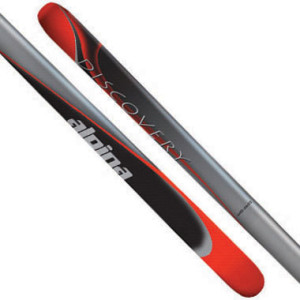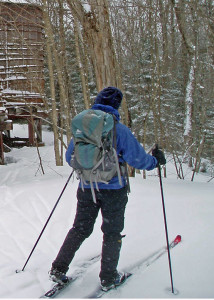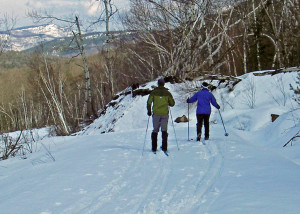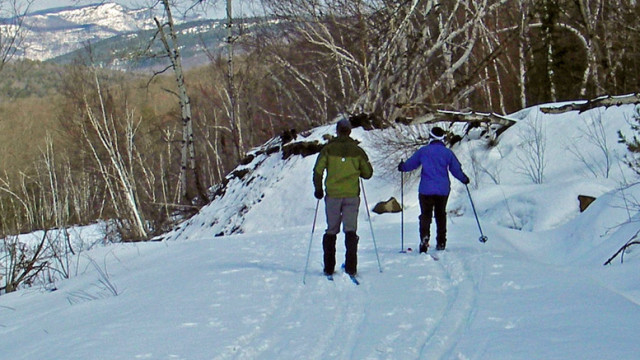
Gwen, a reader from New Hampshire wrote recently for some recommendations on cross-country ski gear. She wanted gear she could take into the untracked backcountry. Yet she still wanted to be able to use it on groomed cross-country trails.
I faced the same dilemma myself a couple of years ago. Tele or AT gear with skins is wonderful for very serious off-trail skiing, especially on steep terrain. Skate skis or classic racing skis are a blast on groomed trails, but almost useless anywhere else. Touring skis can work almost anywhere, but some “backcountry” skis are even better.
The key is the width of the ski relative to its length. At equal length, a wider ski “floats” higher in untracked snow (especially if you are carrying a pack) than a narrower one and generally turns better in softer snow. The downside, of course is that wider skis are heavier than narrow ones and the more your skis weigh, the more work it is to move them. That’s why most backcountry skiers are going for wider, shorter skis.

But the set tracks at Nordic ski areas are generally about 70 mm wide, so the widest ski you can use without scrubbing the sides of the track (which slows you down) is about 68 mm. That isn’t very wide by modern backcountry standards.
The compromise I came up with are the Alpina Discovery Backcountry Skis which have full steel edges and a sidecut measuring 68mm at the tip, 60mm underfoot, and 65mm at the tail. Other companies including Rossignol and Fischer make very similar models. That width at the front doesn’t really slow us down in tracks and the ski performs acceptably in the untracked (though a wider ski would be better). It’s a compromise that does everything well enough.
She uses 170s, I have 190s for extra flotation if I’m carrying a pack. Both pairs are mounted with Rottefella BC Magnum NNN bindings. I ski mine with a beefy backcountry boot, the Alpina BC2050 which has the ankle support I like for skiing with a pack on serious terrain. Marilyn uses the lighter BC1550 boot since both she and the packs she carries are lighter.

No, these aren’t the fastest and lightest cross-country set up if you are skiing in tracks, and no they don’t have as much flotation as a really wide backcountry ski. But if you are going to have only one pair of cross-country skis to use anywhere, any time, a setup like the Alpina Discovery Backcountry Skis is just about the best you’ll find.



Nice info in the article. I really like the Alpina line of BC Skis. I tend to go with a 75mm 3 pin binding and boots on my skis, Cross Terrains, which are too wide for track skiing, but I feel that they give you more control over the skis. I have skied from the top of Mt Katahdin in Maine with this equipment and they worked very well. Also 75 mm boot are stiff enough to use crampons on in a climbing/mountaineering situation. This combination also works very well for Back Country touring and also for breaking trails.
Leo,
Sounds like you’ve found your own one-ski quiver for your backcountry needs. If you are never going to ski in tracks, the wider skis just make sense. And you obviously have the skills it takes to ski them. I have to admit, though, that if I were climbing up and skiing from the top of Katahdin, I’d want a beefier randonee or Telemark set up, especially if there was any chance of crust or ice. Just curious have you ever tried any of the Meta Skis or Sliding Snowshoes?